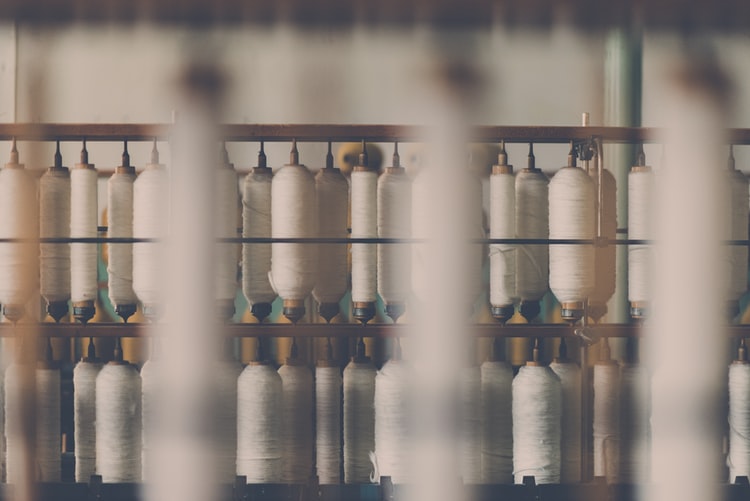Close to 97 percent of clothing in the US originates overseas, typically in lower-middle and middle-income countries in Asia. Domestic textile factories face intense competition from these areas where manufacturing is low because of cheap labor.
However, with growing conscientiousness about where their clothing originates, people are opting for locally produced fabric.
Once again, the domestic textile industry is becoming an attractive business opportunity. If you are looking to start with a bang, here are a few ways a textile manufacturer can succeed.
Table of Contents
#1 Location
Finding the best location for your factory can take a lot of research and planning. You will want a site where there is demand for your fabric and other products. To narrow down your search, keep in mind your own set of criteria. Some of these can include:
- Affordable rent
- Profitable markets nearby
- Reliable utilities
- Supply of workers
- Well-developed logistics
Textile production is, unfortunately, one of the most polluting industries. Make sure your business follows prudent climate laws and adheres to local and federal business regulations. In addition to the above criteria, your factory must be a safe distance away from residential areas.
Know your competition around your location: too often, textile factories come up close to one another to engulf their competitors in an attractive business environment. You can employ online review platforms to check your competitors’ edge over you–– in terms of online presence, price, client base, and quality.
#2 Legal Counsel
If you are in the textile business, it is imperative to have a legal team you trust. If you import and export raw material or finished product, you will need professional advice regarding tax incidences, customs issues, and other legal matters involved when trading across borders.
If your factory generates intellectual property, a legal advisor can help you protect these rights. Debt collection from customers and clients might require legal intervention if they fail to pay on time. Lawyers can also help assist in financing issues as well as acquisitions and mergers.
Your legal team can also help you ensure that your business has all the prerequisite licensing and permits.
#3 Capital Investment
A textile factory is traditionally dependent on the demands of the labor market. Having so many workers will inevitably lead to your balance sheet taking a huge hit. Fortunately, today’s textile manufacturing sector in North America is mainly mechanized and does not depend on the supply of workers.
Investing in quality capital equipment is a whopping one-time sacrifice. The machinery streamlines processes, is highly efficient and economical. The long-term benefits of employing capital machinery in your textile factory make it the objectively better option. The operator console enclosure can protect personnel from accidental injury and aid in operating other mechanized devices inside the factory.
Operating a textile factory can become very expensive very quickly. Delayed orders, deferred payments, structural shocks in the economy are all deeply felt in this sector. Keep a close eye on your finances and routinely consult with investors or stakeholders.
#4 Diverse Client Base
Any business owner has to develop honest relationships with their clients or purchasers. Having buyers from different fields can improve your business contacts and networking potential. Diversifying your client base can also cushion you from supply chain shocks that every manufacturing business is prone to.
Besides building a sizable networking group, having a trusting relationship with your clientele can give you some benefits. Your suppliers may be willing to extend credit to your factory or be willing to pay for your order in full before receiving the final products. Building trust is among all the parties involved ensures predictable and enduring business relationships.
When you know who you are selling, you can learn what your customers look for in their products. Some popular certifications are ISO (International Organization for Standardization) and ANSI (American National Standards Institute). You can also look for the preferred standard of certification of potential clients.
#5 Ensure That New Customers Can Find You
In a world that is increasingly tech-savvy and internet-dependent, it is essential to have an online presence. Reach out on social media platforms and promote your work on information and supplier discovery platforms.
This move will ensure that you have a ubiquitous brand presence to attract new buyers and retain old ones. When you have built sufficient brand recognition, your products and services will automatically connect you to potential clients.
Many young buyers like to source their textiles and most other products locally and impersonally on online networks. Ensure that your company has a place in relevant local business directories like Google, Yelp, Apple Maps, and Facebook.
If you want to foray across the border, you will benefit from ensuring that you and your management team understand the market and the region’s distribution and local laws. Try to have a fair idea of the legalities in foreign markets. Often overlooked are their business ethics, culture, and logistics: being aware of these can give you a considerable competitive edge.
Conclusion
Aggressive advertising, vigorous quality checks, and standard assurances play a significant role in your textile business. Of course, all this lies on the backs of the quality of raw material. Distribute and diversify your suppliers to find the best offers. Diversification also protects you from temporary supply chain shocks and increases brand recognition.
The above tips are meant for beginners but are applicable to anyone in the textile industry. An effective and successful manufacturing unit only goes as far as the experience, innovation, and learning of the producers.
A textile factory, like any other manufacturing segment, feels the burn of an economic downturn. When beginning this venture, focus on creating a resilient business model that does not hemorrhage cash in day-to-day operations. Streamline operations, but don’t expect to have a positive cash flow from operations balance anytime soon.



